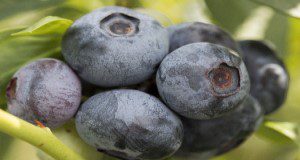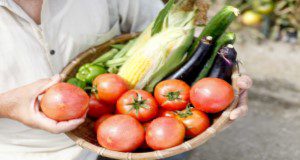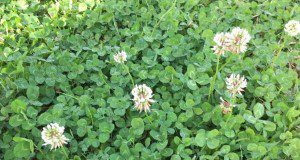Growing your own Florida vegetable garden can be a rewarding experience with a little planning. This 5-page publication of the UF/IFAS Horticultural Sciences Department presents an overview of proper seed selection and planting. It also provides best management practices, as well as relevant terms and methods, for seeding vegetables in home and community gardens. Written by Danielle Treadwell, David Outerbridge, Tabitha Petri, and James M. Stephens.
https://edis.ifas.ufl.edu/vh026
Tag: Danielle Treadwell
Organic Blueberry Production in Florida
There is a growing market in the United States and globally for fresh fruits and vegetables with reported health-enhancing properties. This includes blueberries, which are high in antioxidants and have been reported to improve heart health and contain anticancer properties. Fresh-market blueberry sales (conventional and organic) increased by 27% between 2013 and 2017, and that trend is expected to continue. In addition, there is an increasing level of consumer interest in organically grown produce (for environmental conservation, taste, and other perceived benefits), for which some consumers are willing to pay a premium over the price for a conventionally produced crop. This new 8-page publication of the UF/IFAS Horticultural Sciences Department discusses various aspects of organic blueberry production in Florida and is intended for use by those currently using or interested in pursuing organic production. Written by Douglas A. Phillips, Peter J. Dittmar, Philip F. Harmon, Oscar E. Liburd, Danielle D. Treadwell, and Jeffrey G. Williamson.
https://edis.ifas.ufl.edu/hs1400
Guía para Cultivar Vegetales en la Florida
El desarrollo y planificación de un huerto en el hogar, es una actividad agrícola que puede realizarse durante todo el año en Florida. Puede ofrecer muchos beneficios para la salud física y emocional. Los huertos nos proveen alternativas para realizar ejercicios, disfrute del huerto, producción de vegetales frescos y nutritivos, ahorro económico y muchos otros. Esta guía proporciona recomendaciones para hacer un huerto en su residencia y comunidad, e incluye las fechas de siembra, la selección de variedades para la planificación de cultivos, el manejo de agua, nutrientes, plagas y la cosecha.
This is a translation of SP103/VH021, Florida Vegetable Gardening Guide. Written by Sydney Park Brown, Danielle Treadwell, J. M. Stephens, and Susan Webb; translated by Francisco Rivera; and published by the UF/IFAS Horticultural Sciences Department.
https://edis.ifas.ufl.edu/hs1383
Weeds as Reservoirs of Plant Pathogens Affecting Economically Important Crops
Weeds are a major contributor to yield loss and reduction in yield quality in an agricultural setting, competing with the crop for resources like light, water, and nutrients. This competition, along with the cost of weed management strategies like tillage and herbicides, is responsible for the economic impact of weeds, which can reach into the billions. Weeds can also harm crop plants by acting as reservoirs for destructive plant pathogens, the insect vectors that move these pathogens from plant to plant, or both. This new 7-page publication of the UF/IFAS Horticultural Sciences Department, written by Morgan Byron, Danielle Treadwell, and Peter Dittmar, summarizes previously published weed-pathogen associations to help growers scout and monitor pathogens in weeds near production areas.
https://edis.ifas.ufl.edu/hs1335
Postharvest Storage, Packaging and Handling of Specialty Crops: A Guide for Florida Small Farm Producers

Every year farmers must harvest their crops. This process marks the end of the growing season and carries social significance in communities, but it also creates challenges for producers trying to deliver fresh, high-quality produce to market. Good postharvest practices establish appropriate cold chains that maintain the correct temperatures, humidity, and respiration rates while also ensuring the safety, sanitation,and quality of the fruits. These postharvest practices differ, depending on the size and economic situation of an operation. This eighteen-page fact sheet provides postharvest storage, packaging, and handling recommendations for small farm specialty crop producers. Written by Jonathan Adam Watson, Danielle Treadwell, Steven A. Sargent, Jeffrey K. Brecht, and William Pelletier, and published by the Horticultural Sciences Department.
http://edis.ifas.ufl.edu/hs1270
Florida Vegetable Gardening Guide — Revised!
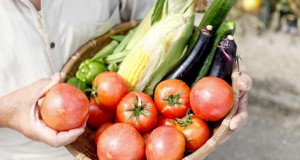
Vegetable gardening offers fresh air, sunshine, exercise, enjoyment, mental therapy, nutritious fresh vegetables, and economic savings, as well as many other benefits. With some attention to planning and planting, vegetables can be grown year-round in Florida. This 11-page guide provides recommendations primarily for traditional home gardens, including planning your garden and choosing crops, soil preparation and maintenance, fertilization, irrigation, pest management, and other gardening know-how. Includes a planting guide, table of suggested varieties, and table of products labeled for insect and mite management in home vegetable gardens. Written by Sydney Park Brown, Danielle Treadwell, J. M. Stephens, and Susan Webb, and published by the Environmental Horticulture Department.
http://edis.ifas.ufl.edu/vh021
A Farm to School Procurement Calculator for Specialty Crop Producers and School Food Service Staff
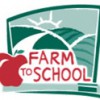 Florida Farm to School programs are designed to connect producers with schools. But school food service staff make their purchasing decisions in terms of servings and producers pack their products by weight. General calculators and guides designed for national Farm to School programs don’t address Florida’s diverse production of fresh fruits and vegetables. This procurement calculator and guide for Florida Farm to School programs was written by Jonathan A. Watson, Danielle Treadwell, Anna Prizzia, and Kelli Brew, and published by the UF Department of Horticultural Sciences, September 2014.
Florida Farm to School programs are designed to connect producers with schools. But school food service staff make their purchasing decisions in terms of servings and producers pack their products by weight. General calculators and guides designed for national Farm to School programs don’t address Florida’s diverse production of fresh fruits and vegetables. This procurement calculator and guide for Florida Farm to School programs was written by Jonathan A. Watson, Danielle Treadwell, Anna Prizzia, and Kelli Brew, and published by the UF Department of Horticultural Sciences, September 2014.
http://edis.ifas.ufl.edu/hs1250
Introduction to Organic Crop Production
 Organic farming can generally be described as a method of production that utilizes non-synthetic inputs and emphasizes biological and ecological process to improve soil quality, manage soil fertility, and optimize pest management. This 16-page fact sheet is written for commercial producers who are transitioning to or beginning organic production. Written by D.D. Treadwell, and published by the UF Department of Horticultural Sciences, April 2014.
Organic farming can generally be described as a method of production that utilizes non-synthetic inputs and emphasizes biological and ecological process to improve soil quality, manage soil fertility, and optimize pest management. This 16-page fact sheet is written for commercial producers who are transitioning to or beginning organic production. Written by D.D. Treadwell, and published by the UF Department of Horticultural Sciences, April 2014.
http://edis.ifas.ufl.edu/cv118
Organic Vegetable Gardening in Florida
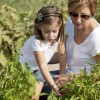 This 16-page fact sheet is meant to be a companion to the Florida Vegetable Gardening Guide. It is intended for the home gardener who prefers to use natural and organic materials as well as methods that are compatible with the philosophy of organic gardening. was written by Danielle D. Treadwell, Sydney Park Brown, James Stephens, and Susan Webb, and published by the UF Department of Horticultural Sciences, June 2013.
This 16-page fact sheet is meant to be a companion to the Florida Vegetable Gardening Guide. It is intended for the home gardener who prefers to use natural and organic materials as well as methods that are compatible with the philosophy of organic gardening. was written by Danielle D. Treadwell, Sydney Park Brown, James Stephens, and Susan Webb, and published by the UF Department of Horticultural Sciences, June 2013.
http://edis.ifas.ufl.edu/hs1215
HS1164 Microgreens: A New Specialty Crop
HS1164, a 3-page illustrated fact sheet by Danielle D. Treadwell, Robert Hochmuth, Linda Landrum, and Wanda Laughlin, provides an overview of this new type of market crop and its production. Includes references. Published by the UF Department of Horticultural Sciences, May 2010.
http://edis.ifas.ufl.edu/hs1164
PP266 Cucumber Anthracnose in Florida
PP266, a 5-page illustrated fact sheet by Jessica Palenchar, Danielle D. Treadwell, Lawrence E. Datnoff, and Amanda J. Gevens, describes the symptoms, causal organism, disease cycle, and management of cucumber anthracnose in Florida. Includes references. Published by the UF Department of Plant Pathology, May 2009.
http://edis.ifas.ufl.edu/PP266
HS1148/HS396 Guide for Maintaining the Quality and Safety of Organic Vegetables and Melons During Harvest and Handling Operations
HS-1148, a 7-page fact sheet by Steven A. Sargent and Danielle Treadwell, highlights practical guidelines to assist growers and handlers of organic vegetables and melons to minimize losses during harvest and handling operations. Differences in recommendations between crops grown using organic methods and conventional production methods are noted. Includes references. Published by the UF Department of Horticultural Sciences, March 2009.
http://edis.ifas.ufl.edu/HS396
SP103/VH021 Florida Vegetable Gardening Guide
Revised! SP-103, a 12-page fact sheet by J.M. Stephens, Sydney Park Brown, Danielle Treadwell, Susan Webb, Amanda Gevens, R.A. Dunn, G. Kidder, D. Short, and G.W. Simone, provides research-based recommendations appropriate for home gardens. It covers planning, soil preparation, compost and fertilizing, irrigation and drainage, and pest management with and without pesticides. Includes tables with fertilizer and insectic control recommendations, a planting guide with planting dates and spacing information, and a table of varieties recommended for Florida gardens. Published by the UF Horticultural Sciences Department, February 2009.
http://edis.ifas.ufl.edu/VH021
HS1149/HS398 Home Vegetable Garden Techniques: Hand Pollination of Squash and Corn in Small Gardens
HS-1149, a 4-page illustrated fact sheet by Ed Thralls and Danielle Treadwell, addresses techniques for hand pollination of squash and corn to produce bountiful harvests in home gardens. Includes references. Published by the UF Department of Horticultural Sciences, December 2008.
http://edis.ifas.ufl.edu/HS398
HS-1142/HS390 Annual Cover Crops in Florida Vegetable Systems Part 3. Buying and Sourcing
HS-1142, an 8-page illustrated fact sheet by Danielle Treadwell, Waldemar Klassen, Michael Alligood and Stephanie Shewey, is part three of the three-part Annual Cover Crops in Florida Vegetable Systems series. It presents points to consider when purchasing cover crop seeds and provides contact information for cover crop seed retailers and wholesalers. Includes references and contact information for US retailers of cover crop seed and rhizobium inoculant. Published by the UF Department of Horticultural Sciences, March 2008.
http://edis.ifas.ufl.edu/HS390
FCS8872/FY1062 Minimizing Food Safety Hazards for Organic Growers
FCS-8872, a 9-page fact sheet by Amy Simonne and Danielle Treadwell, integrates
the key requirements of the Food and Drug Administration Guide to Minimize Microbial Food Safety Hazards for Fresh Fruits and Vegetables (FDA GAPs) and the USDA National Organic Program (NOP) in order to emphasize the areas in which producers can most significantly reduce the food safety risk for their consumers.
http://edis.ifas.ufl.edu/FY1062
FE732/FE732 Economics of the Organic Food Industry in Florida
FE732, an 8-page illustrated fact sheet by Thu-Vi Nguyen, Allen Wysocki, and Danielle Treadwell, delivers an overview of the organic industry in Florida, covering the definition of organic, requirements for organic certification, issues in the Florida organic industry, and major market outlets for organic products. Includes references. Published by the UF Department of Food and Resource Economics, September 2008.
http://edis.ifas.ufl.edu/FE732
HS1141/HS389 Annual Cover Crops in Florida Vegetable Systems Part 2: Production
HS-1141, a 10-page illustrated fact sheet by Danielle Treadwell, Waldemar Klassen and Michael Alligood, is the second part of the three-part series, Annual Cover Crops in Florida Vegetable Systems. It discusses management practices for annual cover crops, from seed selection to termination.
Includes references. Published by the UF Department of Horticultural Sciences, July 2008.
http://edis.ifas.ufl.edu/HS389
HS1146/HS397 Understanding the ‘USDA Organic’ Label
HS-1146, a 6-page illustrated fact sheet by Danielle D. Treadwell and Mickie E. Swisher, briefly outlines the history of the USDAs National Organic Program (NOP), summarizes for consumers the benefits of government regulation of organic food products, and provides a guide for interpreting labels on products with organic ingredients. Includes references. Published by the UF Department of Horticultural Sciences, August 2008.
http://edis.ifas.ufl.edu/HS397
HS387/HS387 Annual Cover Crops in Florida Vegetable Systems Part 1. Objectives: Why grow cover crops?
HS387, an 18-page illustrated fact sheet by Danielle Treadwell, Waldemar Klassen and Michael Alligood, is part one of a three-part series. This publication discusses the reasons why a producer might consider including a cover crop in the vegetable cropping system. Includes references. Published by the UF Department of Horticultural Sciences, February 2008.
http://edis.ifas.ufl.edu/HS387

